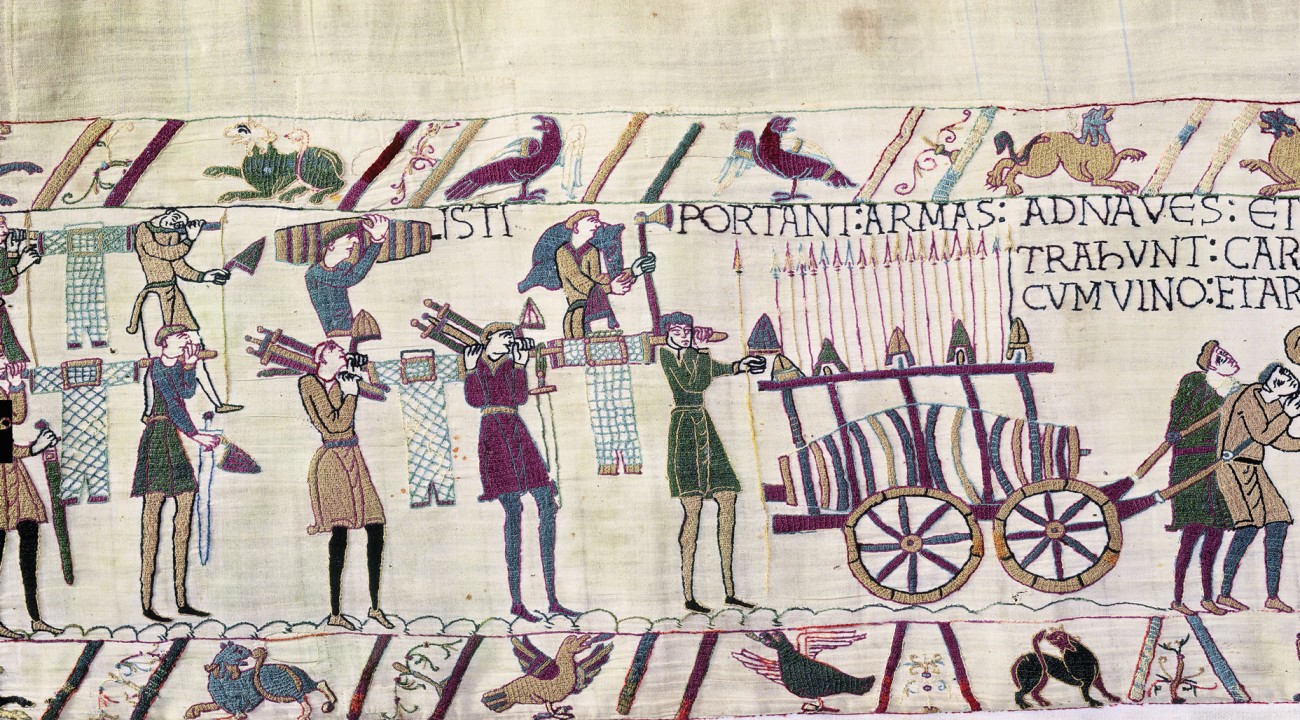
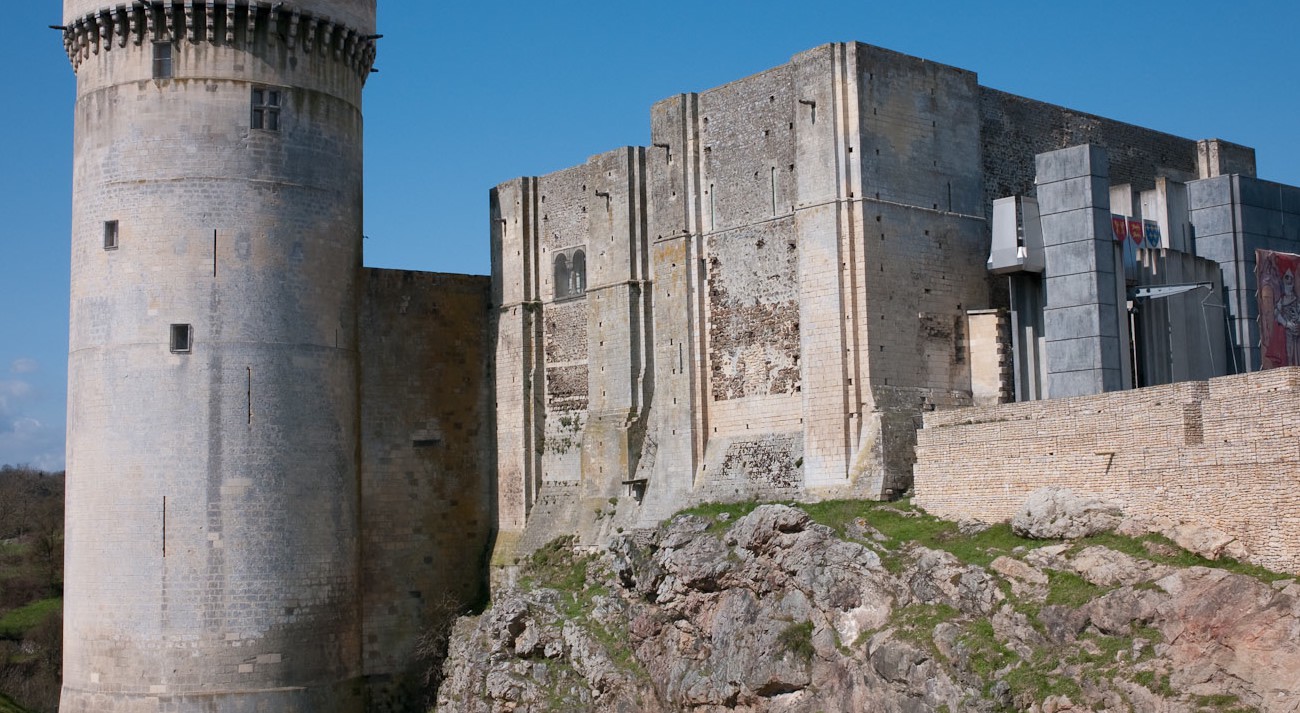
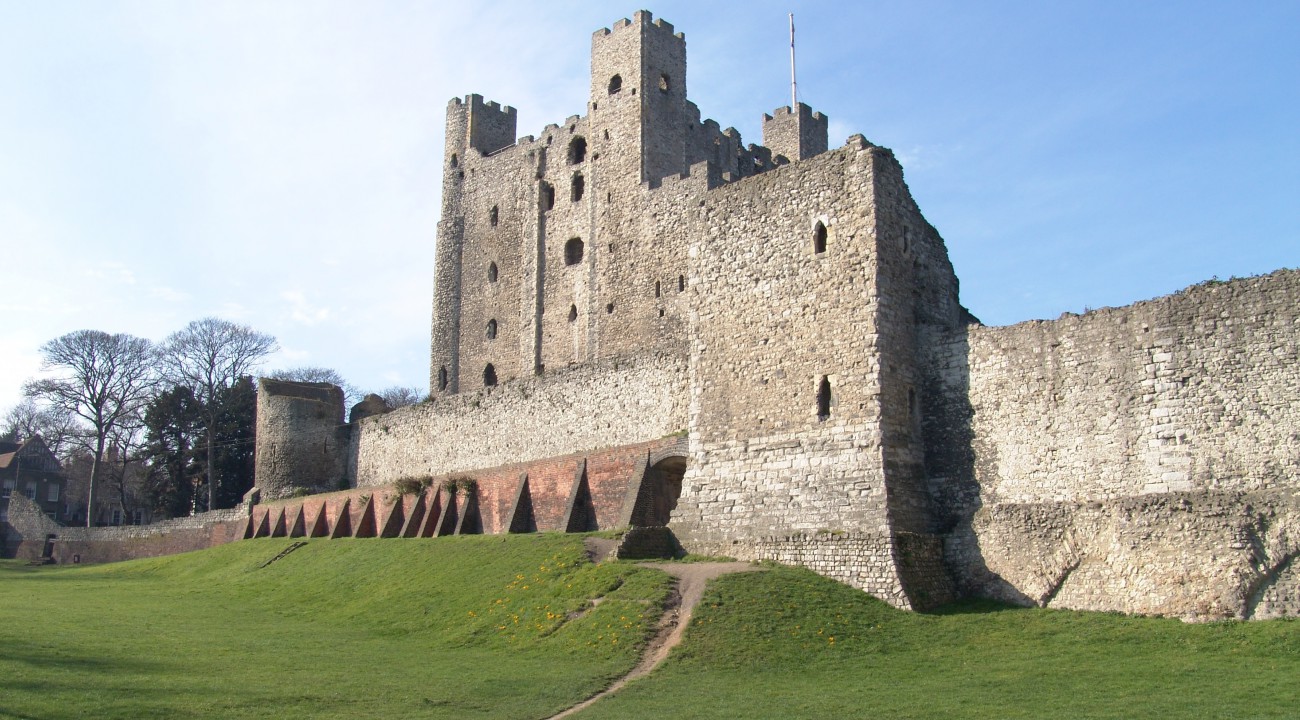
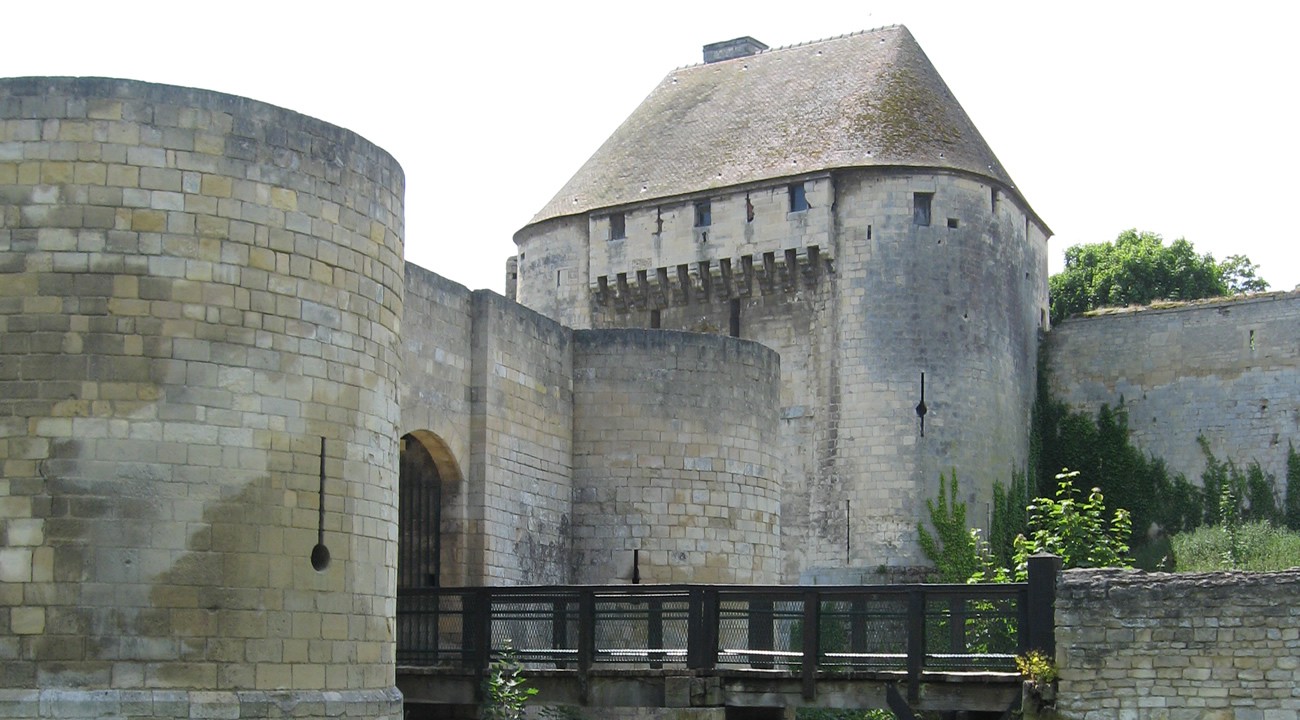
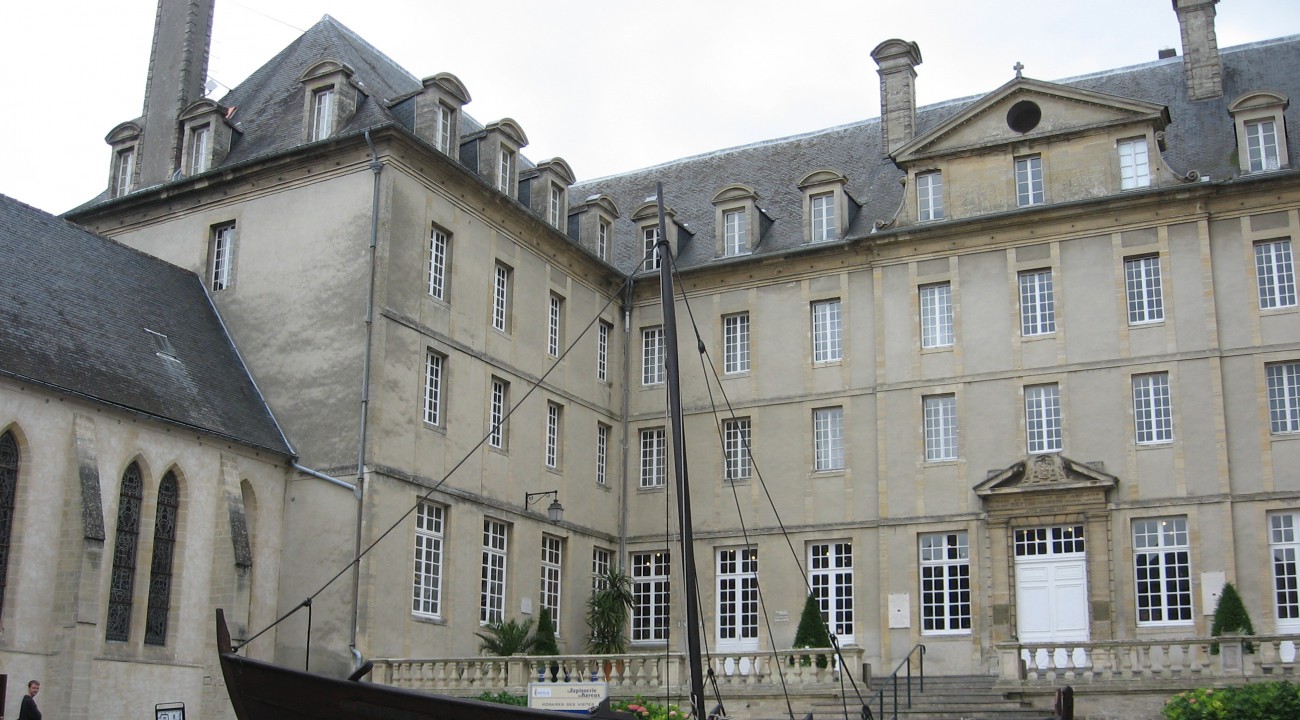
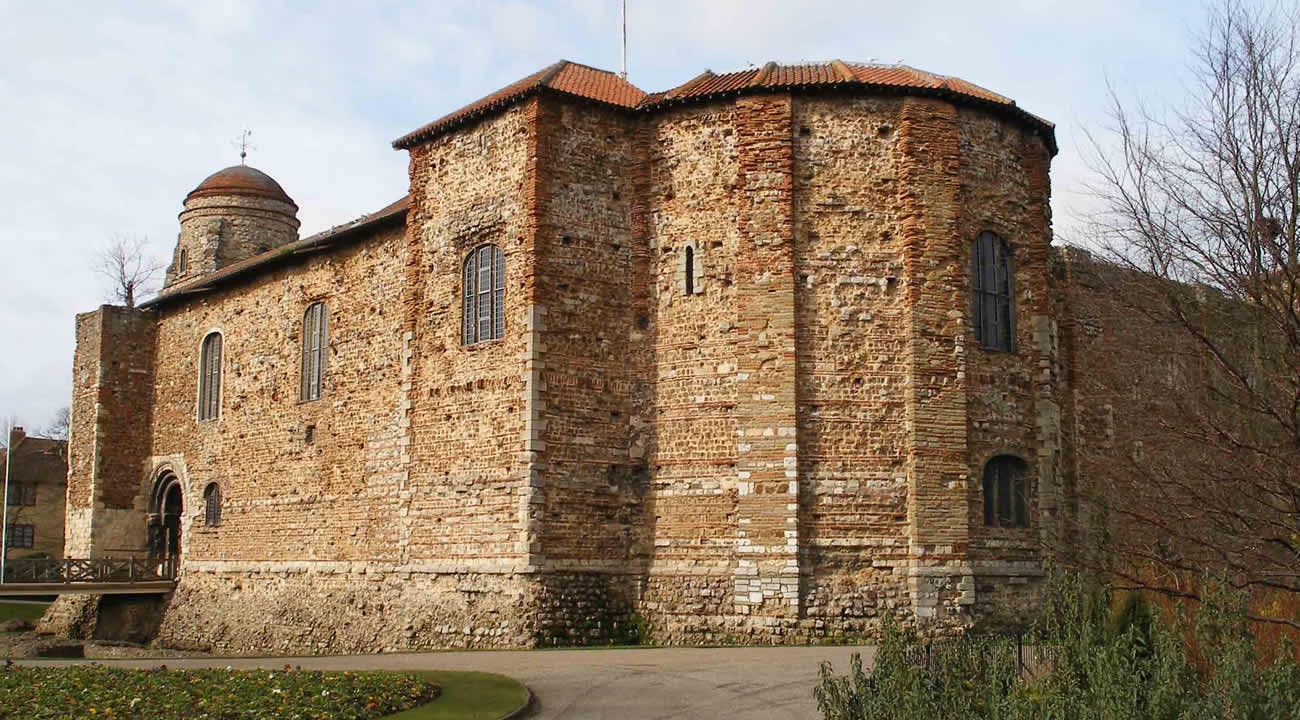
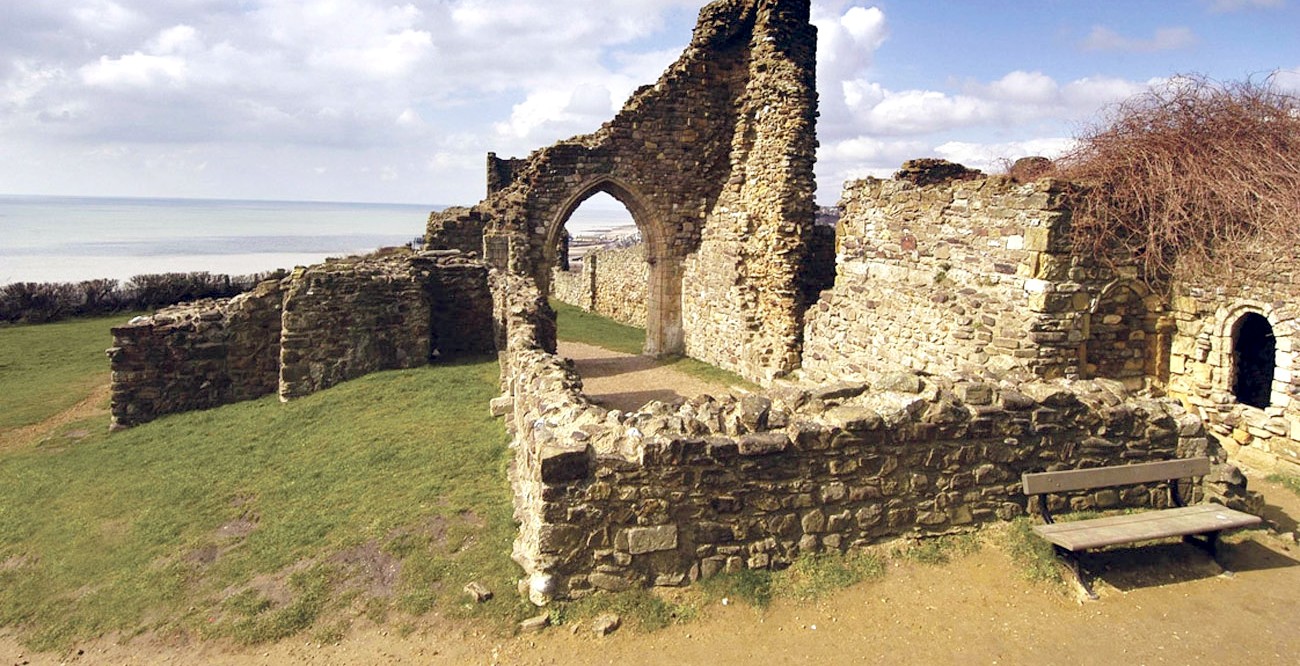
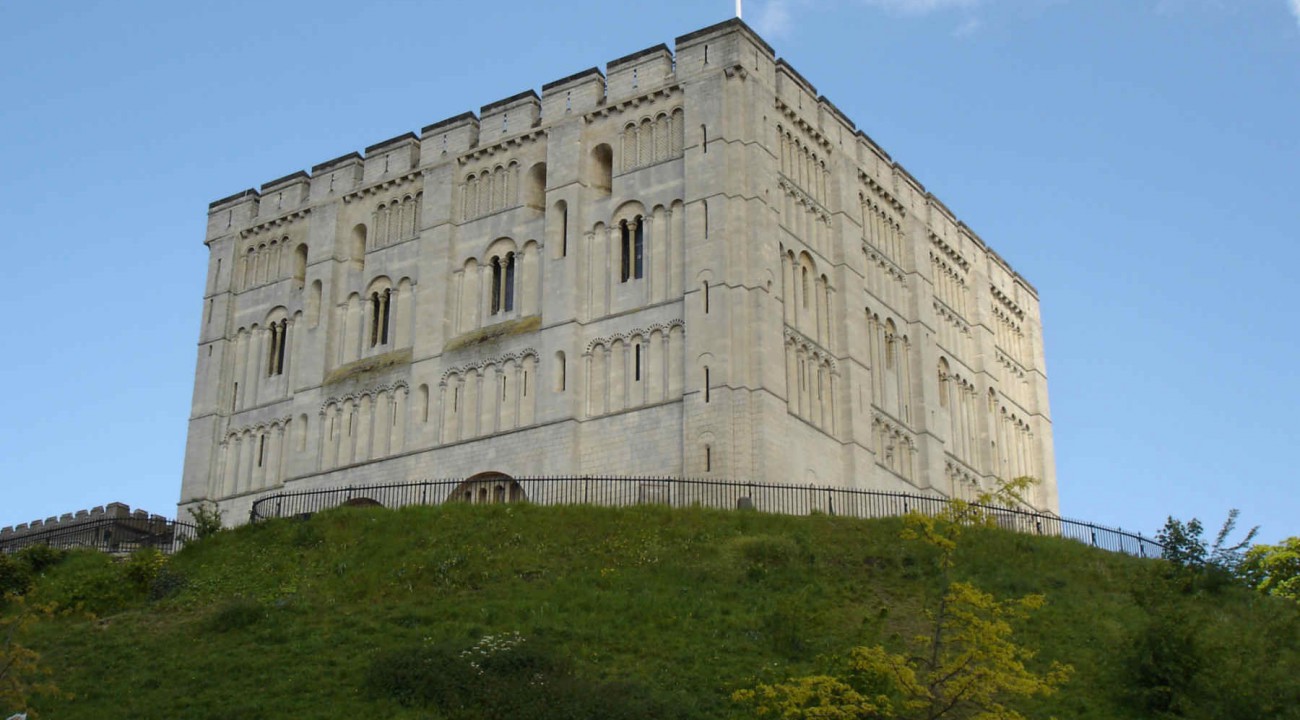
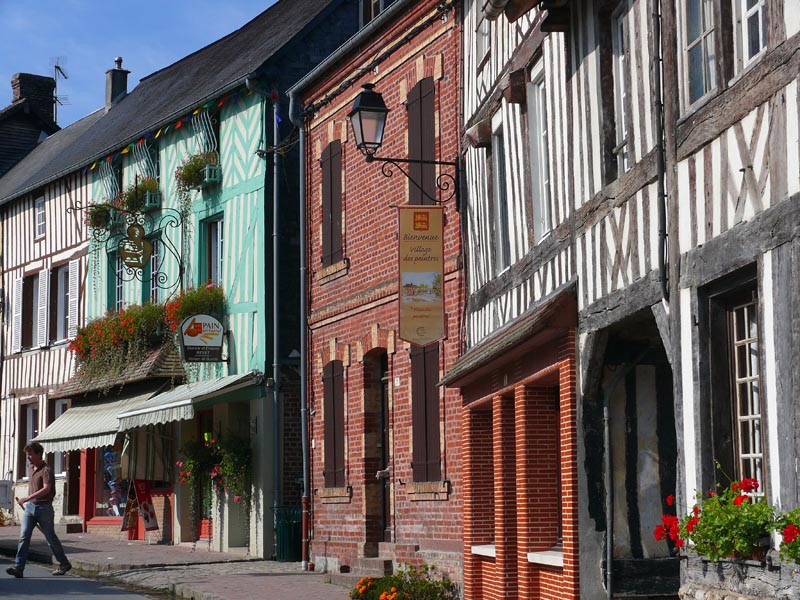
Discover Calvados Region
- Introduction
- Timeline
- Gallery
- History
- Maps

Foundation of Normandy
DATE: 911
Treaty between the King of France and the Viking chief Rollon to bring an end to Viking raids that continue in England until the Danish invasion of 1014

DATE: 942
First Château in Falaise, built under Richard I, one of the first in Normandy

Danish empire
DATE: 1016
Knut (1016-1035, King of the Danes, the English and the Norwegians

DATE: 1017
Grant of land at Hastings to Abbey de Fecamp

DATE: 1025
Mentions of the port, the market and a fair in Caen

Robert the Magnificent, Duke of Normandy
DATE: 1027
After two long founding reigns of Richard I (942-996) and Richard II (996-1026), descendents of Rollon, feudal crisis in Normandy

DATE: 1027
Birth of William of Normandy in Falaise

DATE: 1027
Siege of Richard III, Duke of Normandy, against Robert the Magnificent, entrenched in the Château

William the Bastard
DATE: 1035
Death of Robert the Magnificent returning from pilgrimage in the Holy Land; William, aged 8, becomes Duke of Normandy

Edward the Confessor, King of England
DATE: 1042
Restoration of the Anglo-Saxon monarchy after the exile of Edward at the court of the Duke of Normandy (1017-1042)

DATE: 1042
Siege of Falaise by William of Normandy and Raoul of Gacé against Turstin Goz, the rebel Viscount of Hiemois

DATE: 1047
Battle of Vas-es-Dunes, victory of William of Normandy over his rebellious vassals

DATE: 1054
Battle of Mortemer, victory of William of Normandy's troops over the King of France

DATE: 1057
Defeat of a Franco-Angevin expedition at Varaville, near Caen

DATE: 1060
Construction begins on the Château of Caen

William the Conqueror, Duke of Normandy, King of England
DATE: 1066
Battle of Hastings (14 October) and conquest of England by the Normans; William of Normandy becomes King of England

DATE: 1066
First timber Motte and Bailey built at Rochester

DATE: 1066
Dedication of the church of Saint-Trinity at the 'Abbaye aux Dames' in Caen (18 June)

DATE: 1066
Construction of the first Castle of Hastings

DATE: 1067
Demolition of at least 98 Saxon homes and construction of earth and timber motte and bailey castle in Norwich

DATE: 1069
Sussex divided into 6 rapes, each with castle, to defend Anglo-Norman sea crossings. Hastings Castle given to Robert of Eu

DATE: 1075
Rebellion of the Earls and siege of Norwich Castle, currently held by Countess Emma

DATE: 1076
Traditional date for William the Conqueror ordering the building of Colchester Castle, on foundations of the roman Temple of Claudius

DATE: 1077
Dedication of the church of Saint Étienne of the 'Abbaye-aux-Hommes' in Caen (13 September)

DATE: 1086
The Domesday Book records a survey of land ownership and possessions of people in England

DATE: 1087
Stone castle built at Rochester for William Rufus by Bishop of Rochester Gundulf

William Rufus; Robert Courteheuse
DATE: 1087
Death of William: William Refus, King of England; Robert Courteheuse Duke of Normandy

DATE: 1088
First siege of Rochester Castle during the rebellion of the Norman Barons under Odo Bishop of Bayeux against William Rufus

DATE: 1094
William II assembled with large army at Hastings for expedition to France, later abandoned

DATE: 1094
Construction of the stone Keep in Norwich begins

DATE: 1096
Count William of Eu dies, buried within Hastings Castle

DATE: 1096
Foundation stone of Norwich Cathedral is laid by Herbert de Losinga, 1st Bishop of Norwich

DATE: 1100
William II is killed by an arrow whilst hunting in the New Forest; Henry I (fourth son of William I) is crowned King of England

DATE: 1100
Stonemasons replace the timber castle in Norwich with a Royal palace made from Caen stone and local flint

DATE: 1101
Castle of Rochester and town granted by Henry I to Eudo, Steward of Normandy, who is responsible for a second phase of building work

DATE: 1103
King Henry I visits Norwich

DATE: 1105
The people of Caen expel the garrison of Robert Couteheuse from the Château of Caen; Henri Ist Beauclerc celebrates Easter in the Château of Caen (13 April)

Henry I Beauclerc, King of England, Duke of Normandy
DATE: 1106
Battle of Tinchebray: victory to Henry I Beauclerc against his brother Robert Courteheuse

DATE: 1108
King Henry I visits Norwich

DATE: 1118
Henry I Beauclerc is in Caen

DATE: 1119
Herbert de Losinga dies

DATE: 1120
Sinking of the White Ship, which kills the only surviving and legitimate son and heir to King Henry I

DATE: 1120
Construction of the Keep and the 'Salle de lÉchiquier' of the Château of Caen by Henry I Beauclerc / Henry I increases the height of the outer wall of the Château of Caen

DATE: 1120
Eudo dies and Hamo de St Clair becomes Constable of Castle

DATE: 1121
Henry I visits Norwich Castle at Christmas

DATE: 1121
Stone Keep at Norwich is completed

DATE: 1123
Construction of the Great Keep of the Château of Falaise by Henry I Beauclerc

DATE: 1124
Henry I Beauclerc celebrates Easter in the Château of Caen (26 March, 'Salle de lÉchiquier'?)

DATE: 1127
Construction of the Great Keep at Rochester is started by William de Corbeil, Archbishop of Canterbury

DATE: 1132
Visit by Henry I, King of England and Duke of Normandy

Etienne against Mathilde
DATE: 1135
Death of Henry I Beauclerc. Etienne, King of England fights against Empress Matilda and Geoffrey of Anjou

DATE: 1138
Caen supports Geoffrey of Anjou

DATE: 1138
Falaise, sides with King Etienne, resists an 18-day siege by the partisans of Geoffrey and Matilda

DATE: 1141
Matilda, daughter of Henry I, rules England for a few months but fails to consolidate her rule

DATE: 1144
Geoffrey of Anjou takes the Duchy of Normandy

DATE: 1144
Jews accused of murdering William of Norwich are given shelter at Norwich Castle

DATE: 1150
Henry Plantagenet, Duke of Normandy

DATE: 1153
William, Count of Boulogne, William de Warenne and Archbishop. Theobald de Bec negotiate at Colchester with the future Henry II

DATE: 1154
Thomas Beckett appointed Dean of Collegiate Church

The Plantagenets
DATE: 1154
King Stephen dies, Henry II Plantagenet King of England

DATE: 1157
Henry II, King of England and Duke of Normandy visits Colchester

DATE: 1159
Christmas court at Château of Falaise

DATE: 1161
Major building works at Hastings Castle

DATE: 1162
Henry II and Thomas Beckett reside at Falaise

DATE: 1171
Construction of Hastings Keep (now lost)

DATE: 1172
Reunion of Norman barons in Caen for inquiry into the military services due from each feudal lord (8 September)

DATE: 1172
Negotiations (at the Château of Caen) between Henry II and the legates of the Pope after the murder of Thomas Becket (30 May)

DATE: 1173
Henry II Plantagenet celebrates Christmas in Caen ('Salle de lÉchiquier'?)

DATE: 1174
Signature of the Treaty of Falaise: Henry II imprisons William of Scotland in the Château to force him to sign the treaty, acknowledging that he is the vassal of the King of England

DATE: 1176
Session of the 'Échiquier' in the hall of the Château of Caen (first mention)

DATE: 1182
Grand Christmas court in the hall of the Château of Caen ('Salle de lÉchiquier'). On this occasion Henry II and his sons receive more than 1,000 knights

DATE: 1187
Henry II Plantagenet celebrates Christmas in Caen (Salle de lÉchiquier ?)

DATE: 1189
Enlargement of the residential space with the construction of the Little Keep at the Château of Falaise (end of the XII c.); faced with the conflict that placed him in opposition to the King of France Philippe Auguste, Richard The Lion Heart has the Château reinforced

DATE: 1194
Norwich is granted the status of a city, with exemptions for the Castle and Cathedral priory

DATE: 1196
William de Lanvalei becomes Constable of Colchester Castle

DATE: 1198
Extensive works in the Château of Caen

DATE: 1199
John Landless celebrates Christmas in Caen

DATE: 1199
John Landless directs the works in Falaise: consolidation of the Château and the town ramparts

DATE: 1200
A stone gatehouse and bridge are built over the dry ditch, replacing the previous wooden structure at Norwich Castle

DATE: 1201
King John promulgated his Ordinances as to the Sovereignty of the Seas from Hastings Castle

DATE: 1202
John imprisons Arthur of Brittany; son of his elder brother and allied to Philippe-Auguste; at the Château of Falaise.

DATE: 1202
Confiscation by Philippe-Auguste of the continental fiefs from John Landless

DATE: 1203
King John visits Colchester and again in 1205, 1209 and 1212

DATE: 1204
Hawise de Lanvalei, widow of William, entrusted the Castle by John

The duchy of Normandy passes into the domain of the King of France
DATE: 1204
Caen surrenders without conflict to Philippe Auguste, King of France (21 May); the siege of Falaise, after Easter of this year, lasts 7 days.

DATE: 1207
Construction of the Talbot Tower of the Château of Falaise

DATE: 1210
Improvement of the defenses of the Château and the town of Falaise (flanking round towers, fortified doors)

DATE: 1210
Construction of a chemise wall around the Keep (outer wall with four round towers), of the Porte des Champs and of the two round towers of the outer wall (Puchot Tower and Matilda Tower) at the Château of Caen

DATE: 1211
William de Lanvalei, son of William, becomes Constable of Colchester Castle

Revolt of the barons and the Magna Carta
DATE: 1214
John removes William de Lanvalei because of his support of the Barons

DATE: 1215
Following the signing of the Magna Carta with the Barons John forced to re-appoint William de Lanvalei

DATE: 1215
Sieges of Norwich Castle and rebellion under Roger Bigod, 2nd Earl of Norfolk

DATE: 1215
Castle of Rochester occupied by a French garrison in support of the Barons ; King John besieges Rochester Castle which is held by the rebel Barons by undermining the walls. Custody of castle is regained by the Crown.

DATE: 1216
Hastings swears allegiance to Louis, son of French King. Castle slighted to prevent it being used against John; death of King John

DATE: 1216
John besieges Castle of Colchester and retakes it from the French

DATE: 1220
Henry III repairs Rochester Castle, replacing the fallen square tower with a rounded tower.

DATE: 1226
First mention of Colchester Castle as a prison

DATE: 1256
Passage of Saint Louis through Caen

DATE: 1264
Rochester is beseiged again during the Second Barons War between Henry III and Simon De Montfort. The Keep is saved by the arrival of a relieving royalist force

DATE: 1275
Series of severe storms lead to erosion of Hastings castle Cliffs and buildings. Eventually half the inner bailey was lost.

DATE: 1300
Decline of the military importance of Norwich Castle

DATE: 1300
Norwich Castle is used as a County Gaol

DATE: 1300
Visit to Rochester Castle by Edward I

DATE: 1314
Queen Isabel of Scotland, wife of Robert the Bruce, was a prisoner in Rochester castle for several months

DATE: 1330
Hastings Castle is noted as being decayed. The Dean of the Collegiate Church petitioned the King for repairs, and was granted custody of the Castle.

DATE: 1338
First mention of the Home of the King (Home of Governors) in the Château of Caen

DATE: 1339
Town of Hastings plundered by French. Castle briefly brought back into use.

DATE: 1343
Unguarded castle pillaged by townspeople of Hastings. Clergy imprisoned

Hundred Year War
DATE: 1346
Siege and pillage of the town of Caen by Edward III, King of England. The Château remains impregnable: first mention of the Puchot Tower; modernisation of the 'Porte des Champs' at the Château of Caen;

DATE: 1347
Extensive works within the enclosure of the Keep of the Château of Caen and reinforcement of the rampart after the raid of 1346

DATE: 1367
Rochester castle is repaired by Edward III and Richard II in response to growing threat of French raiding parties during the Hundred Years War

DATE: 1377
Town of Hastings plundered and burnt by French / Start of long period of decline

DATE: 1381
Rochester Castle is attacked during the Peasants Revolt

DATE: 1416
Visit by Sigismund Emperor of Germany, with a retinue of a 1000 knights

DATE: 1417
Falaise is besieged from 4 November 1417 by Henry V. Surrender occurred on 16 February 1418

Normandy is occupied by the English
DATE: 1417
Siege and taking of Caen by Henry V, King of England. The Château capitulates (21 September)

DATE: 1438
Construction of the barbican of the 'Porte Saint-Pierre' at the Château of Caen

DATE: 1444
The Château receives the Duke of York, lieutenant general and governor of France and Normandy, during his stay in Caen

DATE: 1450
Caen surrenders to the King of France, Charles VII, after 15 days of siege (1st July).

DATE: 1454
Thomas Mallory, author of Le Morte dArthur, imprisoned in Castle of Colchester

DATE: 1475
Construction of the gothic choir of the church of Saint-Georges at the Château of Caen

DATE: 1500
Rochester Castle falls into neglect after Henry VII forbids his nobles from having private armies. Domestic fire destroys the interior of the Keep.

DATE: 1503
François de Silly, bailiff of Caen, has the Château of Caen's fortifications strengthened

DATE: 1522
Visits to Rochester Castle by Henry VIII and Charles V Emperor of Germany

DATE: 1540
King Henry VIII came to Rochester to meet his fourth wife Anne of Cleves

Reform, religious wars and civil wars: the end of fortified Châteaux
DATE: 1546
Collegiate Church within Hastings Castle seized in dissolution of monasteries. Castle in ruins

DATE: 1557
Five Protestants imprisoned for their faith in the Castle and then burnt at the stake

DATE: 1589
Last siege at Falaise: Henry IV drives out the Catholic League members and attacks the Château using artillery

DATE: 1591
Colchester Castle acquired by Pelham family, Lords of Chichester

DATE: 1600
Colchester Castle no longer defensible

DATE: 1610
James I gives the castle to Sir Anthony Weldon in whose family it remains until the nineteenth century

DATE: 1613
The governor's lieutenant complains about the poor state of the "dwellings" of the Château of Falaise: urgent works are programmed

DATE: 1620
The governor of Caen having stood against Louis XIII, the Château threatens a cannon attack on the town acquired by the King

DATE: 1629
Charles I grants Castle to the Earl of Carlisle and it ceases to be in royal ownership

DATE: 1645
Matthew Hopkins, the Witchfinder General, uses the Castle as a base for his interrogations of people suspected of witchcraft

DATE: 1648
Royalist commanders, Lucas and Lisle, held in Castle before their execution at the end of the Siege of Colchester during the English Civil War

DATE: 1656
James Parnell becomes the first Quaker to perish for his faith when he dies, aged 19, of injuries sustained during his imprisonment in Colchester Castle

DATE: 1682
Refurbishment of the Home of Governors of the Château of Caen by the Count of Coigny.

DATE: 1683
John Wheely purchases Colchester Castle and starts to demolish parts of it.

DATE: 1727
Colchester Castle given to Charles Gray and Sarah Creffeild as a wedding present

DATE: 1746
Charles Gray starts to repair and restore parts of Colchester Castle

DATE: 1772
The request is made to destroy dilapidated nave of the feudal chapel of the Château of Falaise

French Revolution and the Franco-English wars: the reconversion of châteaux
DATE: 1789
On 21 July, Caen inhabitants force the entrance of the Château of Caen.

DATE: 1792
Architect, Sir John Soane, designs and builds a new gaol in and around Norwich Castle Keep

DATE: 1792
The Falaise Keep is transformed into a prison (project abandoned)

DATE: 1793
The National Convention (revolutionary parliament) orders the destruction of the Château of Caen, symbol of feudalism; only the Keep is progressively ruined

DATE: 1803
A school is built in the courtyard of the Château of Falaise

DATE: 1807
Redevelopment of the sector of the Keep of the Château of Caen for the construction of a powder magazine. The Keep is progressively razed to the ground.

DATE: 1811
During his passage through Caen, Napoleon envisages the total destruction of the Château given the state of dilapidation of the fortress

DATE: 1822
Prison blocks outside Norwich Castle Keep are demolished and a new gaol is designed by William Wilkins, Norwich-born architect and archaeologist

Archeology & restorations
DATE: 1824
First excavations of Hastings Castle. Partially rebuilt as pleasure garden.

DATE: 1834
Architect Anthony Salvin undertakes a refacing of Norwich Castle Keep with Bath limestone

DATE: 1836
Colchester Castle ceases to be a prison

DATE: 1840
Given the dilapidated state of the Château of Falaise's Keeps, the classification of historical monument is launched by Prosper Mérimée, Minister of Fine Arts. This is the beginning of several decades of works under a succession of architects

DATE: 1860
Castle of Colchester opens as a museum

DATE: 1870
Rochester Castle grounds leased and turned into a public pleasure garden during which the last traces of the medieval outer gate and drawbridge are demolished

DATE: 1876
First taking of the garrison of the 36th Infantry Regiment of Caen. It will be finally established there only in 1901.

DATE: 1884
Rochester Castle is purchased by the City of Rochester for £6,572

DATE: 1894
Norwich Castle is converted into a museum

DATE: 1934
Colchester Castle re-roofed

Second World War
DATE: 1939
Roman vaults under Castle of Colchester used as an air raid shelter

DATE: 1944
The Château of Caen is hit during the allied bombardments

DATE: 1944
Bombardment of Falaise by the allies. The school is destroyed as well as the choir of the castle chapel. Reparation works on the ramparts and the Keeps will take place during the following decade.

DATE: 1947
First archeological research in the Château of Caen

DATE: 1951
Acquisition of Castle by Hastings Borough Council

DATE: 1956
The Château of Caen becomes the property of the town

DATE: 1963
Museum of Normandy open to the public in the former Home of Governors of the Château of Caen

DATE: 1984
English Heritage takes over guardianship of Rochester Castle

DATE: 1986
Restoration and redevelopment of the Keeps of the Château of Falaise and development of the programme of digs, restoration and improvement of the Château

DATE: 1997
Entire site of the Château of Caen is classed as an Historical Monument.

DATE: 2001
Norwich Castle is refurbished and launched as a museum fit for the 21st century

DATE: 2007
Campaign to restore the ramparts of the Château of Falaise

DATE: 2008
Opening of the Rampart Rooms in the Château of Caen (museographic section).

Norman Connections
DATE: 2009
Towns of Caen, Bayeux and Falaise, the Calvados General Council, the Calvados Departmental Committee for Tourism, the counties of Hastings, Colchester, Norwich and Medway Council collaborate within the framework of the Norman Connection project on the restoration and improvement of Norman châteaux.
The European Union, investing in your future

 Fonds Européen De Développement Régional
Fonds Européen De Développement RégionalL’Union Européenne investit dans votre avenir
INTERREG IV A France (Channel) – England, co-funded by the ERDF.








 Email a friend
Email a friend  Print this page
Print this page 